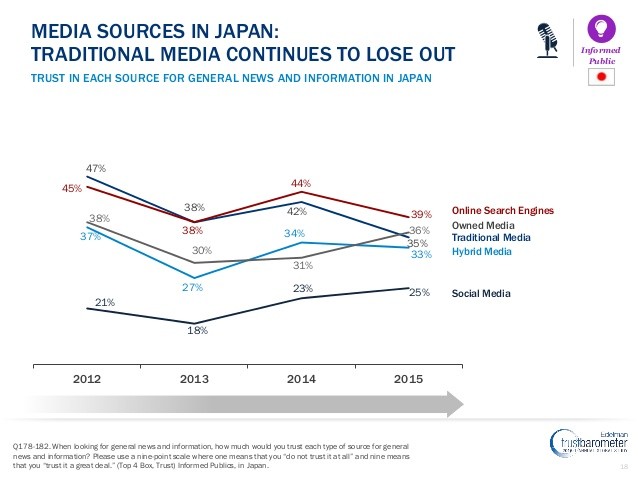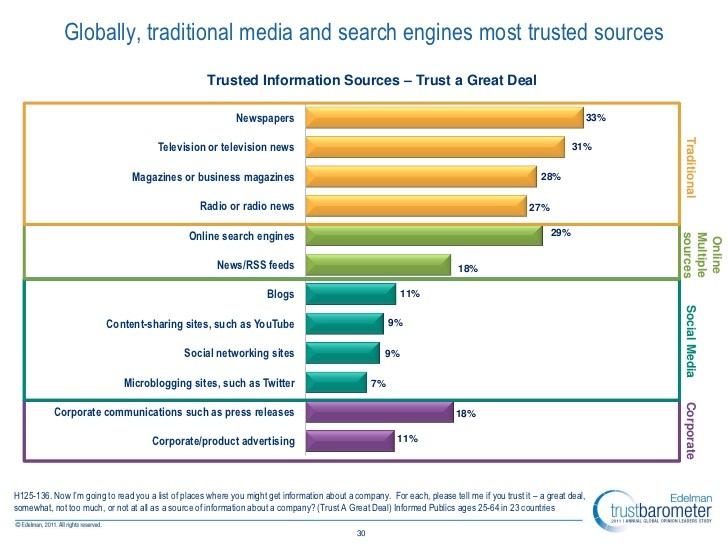Asia Times Online The trusted news source for information on Japan
Post on: 15 Август, 2015 No Comment

Outlook mixed for Japanese economy
By Hussain Khan
TOKYO — The Bank of Japan’s massive quarterly survey of more than 8,500 companies of all sizes across all industries shows vastly improved sentiment among the largest manufacturers. A majority of firms in virtually all sectors reported improved business conditions and optimism over the past three months — but they also predicted a slowdown by March.
The Tankan, or short-term, survey issued by the central bank last Friday showed greater optimism among large manufacturers from September to December 1. But it is still far from certain that the economy will shift into a full-fledged recovery. Most non-manufacturing sectors fared poorly, consumer and household spending was weak and analysts cited the potential negative impact of yen appreciation.
A sense of caution about the outlook is growing, said Kakutaro Kitashiro, chairman of the influential business group Keizai Doyukai. I am not optimistic about the sustainability of the recovery.
The sentiment diffusion index, a measure of business optimism, for large manufacturers surged to 11 by December, up from 1 in September — its highest level in the six and a half years since June 1997. The figure was much higher than the average market forecast and projection of 6. It was the third consecutive quarterly improvement in business outlook.
The Tankan gives investors their most comprehensive look at how Japanese companies view current business conditions and short-term prospects. Much of the information is expressed as diffusion indices, with positive numbers indicating a larger percentage of companies seeing improvement than the percentage holding a negative view.
Thus, the larger the positive number, the greater the majority of companies expressing optimism. The measure, a sort of confidence index, is calculated by subtracting the percentage of firms with a pessimistic view of their businesses from the percentage of those with a positive outlook.
Stocks rose on good news
Stocks rose on the good news in the report and investor confidence was boosted further by two other upbeat announcements last Friday, on industrial output and commercial bankruptcy filings. The Ministry of Economy, Trade and Industry said industrial output rose a revised 1 percent in October from a month earlier. The increase had initially been estimated at 0.8 percent, the third rise in the past four months.
Teikoku Databank, a private credit research firm, reported that the number of corporate bankruptcies fell to 1,136 in November, or down 20.7 percent compared with the same period last year. It was the 11th consecutive monthly decline.
Investors bought a broad range of issues, encouraged by stronger-than-expected business confidence.
The 225-issue Nikkei Stock Average rose 75.52 points, or 0.75 percent, to end the morning at 10,150.66 on Friday. The broader Tokyo Stock Price Index (Topix) of all First Section issues on the Tokyo Stock Exchange (TSE) added 6.07 points, or 0.61 percent, to 997.00.
Stock prices of high-tech, semiconductor, steel and other manufacturers rose on the Tankan results. In the high-tech sector, Nikon surged 93 yen (US$0.86) or 7.2 percent to 1,388, custom chip maker Rohm by 490 yen or 4.2 percent to 12,040 and Advantest, the world’s largest maker of chip-testing equipment, by 260 yen or 3.4 percent to 7,960. Olympus, the world’s second-largest maker of digital cameras, rose 90 yen to 2,250, boosting its gains over the past two days to 6.9 percent. And Ricoh, a major manufacturer of copiers and other office machinery, advanced 68 yen to 1,942, lifting its gain over the past three days to 6.9 percent.
Among semiconductor makers, Oki Electric jumped 19 yen or 5.2 percent to 383, Fujitsu by 18 or 3.1 percent to 598, and Mitsubishi Electric by 11 or 2.6 percent to 433. In the steel sector, industry leader Nippon Steel surged 7 yen or 3.5 percent to 209, Sumitomo Metal Industries gained 2 or 2.1 percent to 98, JFE Holdings advanced 40 or 1.65 percent to 2,470, and Kobe Steel added 2 or 1.6 percent to 130.
In addition to the Tankan, equities were also supported by earlier rises in US stocks. Last Thursday, the blue-chip Dow closed above 10,000 for the first time in nearly 19 months, on better-than-expected November retail sales data and an indication by the Federal Reserve that it will keep interest rates low for some time. The 30-issue Dow Jones Industrial Average advanced by 86.30 points, or 0.87 percent, to 10,008.16. The tech-heavy Nasdaq Composite Index rose 37.67 points, or 1.98 percent, to 1,942.32.
Economic recovery spreading but.
For investors, possibly even more significant than the improved sentiment among manufacturers overall was the fact the survey showed improvement throughout virtually every sector. Among 15 manufacturing sectors, the diffusion or confidence index for the non-ferrous-metal sector rallied by 45 points, the largest-ever rise, to plus-10 in the December survey, followed by a 29-point jump in the index for the coal and oil sector to zero.
Out of 15 sectors, 14 showed improvement, indicating the economic recovery is spreading. The survey also showed noteworthy improvement among certain sectors of the service industry. In the large non-manufacturing sector, especially wholesale trading companies and transport, the outlook is improving.
Yet overall sentiment in the Japanese equities market, which has soared this year as the economy picked up, could be jolted if investors focus on how Japan’s leading manufacturers see the near future. Looking at the negative side, the diffusion index for large manufacturers is forecast at plus-8 for the Tankan survey next March. That means that they expect the economy to slow, and if investors focus on the negative forecasts, the market will not react strongly.
Investors initially snatched up shares on seeing that business confidence has improved, but they became more cautious when looking at the downbeat projections.
Some financial analysts said the financial markets did not react strongly to the Tankan this time, since bond prices were almost unchanged and the yen little changed against the dollar.
The report contained negative news as well.
Non-manufacturers were lagging behind manufacturers in taking advantage of the recent economic upturn in Japan. The diffusion index for non-manufacturers improved by only four points from the September survey, less than half the gain posted by manufacturers. The construction and telecommunications sectors saw business sentiment deteriorate, and retailers were struggling, apparently due to stiff competition and stagnant household income.
Poor performance by non-manufacturers
Although the economy appears to be recovering, thanks to stronger exports and production, a wide range of Japan’s industry has yet to benefit from the nascent economic rebound.
The Tankan report shows a 20-point gap between the diffusion indices for large manufacturers and non-manufacturers. The gap has steadily widened from just four at the time of the March survey, as manufacturers saw an increase in exports while non-manufacturers suffered from stagnant domestic demand. Similar polarization can be observed between smaller manufacturers and non-manufacturers.
By industrial sector, the diffusion index for auto makers improved by 11 points to 35. The figure rose by 15 for precision-machinery makers and 12 for electrical-machinery makers. The index surged by 45 points for producers of nonferrous metals used to make electronics products. The indices for key manufacturers, such as those making cars, precision equipment and general machinery, are nearing the peaks reached during the economic recovery of mid-1997.

In contrast, key sectors of the non-manufacturing industry are all turning in poor performances. The index for the construction business slid three points to minus 29, due to a decline in the number of public-works contracts. And the figure for telecommunications companies dropped by 18 because of the price wars that hurt their mobile-phone and ADSL (asymmetric digital subscriber line) broadband services.
The index for retailers improved by only one point to minus-13. The sector failed to recover much since the last survey period when unseasonably cool weather dampened retail sales.
Overall consumer spending is still weak despite brisk sales of digital home electronics products probably because personal income is not rising, said Toshikimi Kaneki, chief economist at Sumitomo Trust & Banking Co.
The diffusion index of employment conditions at large manufacturers improved by 2 points, but the figure still indicates that these companies are carrying excess workers.
Limited improvement in capital spending
Capital spending is another major question mark. Small and midsize companies made major upward revisions to their investment plans, suggesting that improvement is widening.
Small and midsize manufacturers made a better-than-expected showing in the latest survey, with their diffusion indices improving by nine to 10 points, comparable to the rise registered by their larger counterparts. This indicates that the export businesses of both small and large manufacturers are doing well.
It remains unclear whether the economy will begin a self-sustaining, long-term recovery any time soon given the weakness of the non-manufacturing sector. The economy is also vulnerable to sudden shifts in export demand, particularly from the US and Asian countries. Further, the survey reveals other areas of concern, particularly weakness in household spending and the potential negative impact of yen appreciation.
The recent appreciation of the yen is casting a shadow over the business outlook. If the yen strengthens further and remains high for a prolonged period, it could throw cold water on the recovery. Expanding overseas demand is a major driving force behind the improving outlook.
According to the Tankan, the surveyed firms assume the US dollar will average 114.68 yen in the year to March 2004, compared with a forecast of 117.99 yen in the September survey. For the second half to March, the surveyed firms forecast an average rate of 111.40 yen, compared with the previous estimate of 117.53 yen.
Large manufacturers are assuming an exchange rate of 111.40 yen to the dollar for the fiscal second half, a 6-yen-plus appreciation in the value of the Japanese currency compared with the September survey. This contributed to the downward revision of pretax profit forecasts by major manufacturers. But the recent rise of the yen to the 106 level, after breaking the barrier of 107 per dollar, will force manufacturers to further revise their estimates downward and may even affect the export potential of most of them.
Large manufacturers, meanwhile, are forecasting an 11.1 percent year-on-year increase in capital spending in fiscal 2003 from the prior fiscal year, provided the yen appreciation remains within the limit of their projections. But this marked a zero increase from the September survey, showing no sign of the type of accelerating investment that is typical in a period of economic expansion.
Hussain Khan holds a master’s degree in economics from Tokyo University and has worked in Japan as an equities analyst. He is an independent Tokyo-based analyst on current affairs and economic issues for various newspapers and magazines. E-mail hk@ourquran.com.














